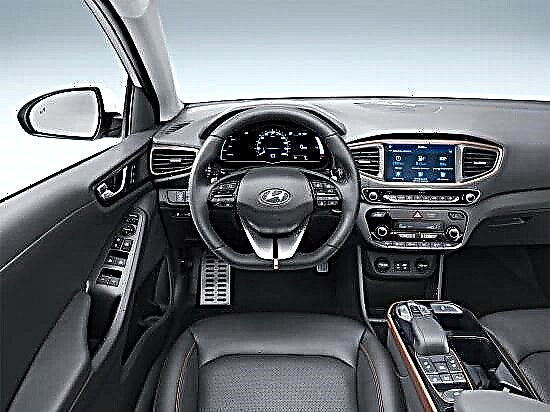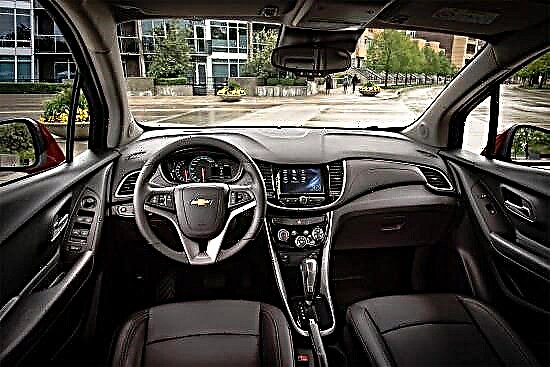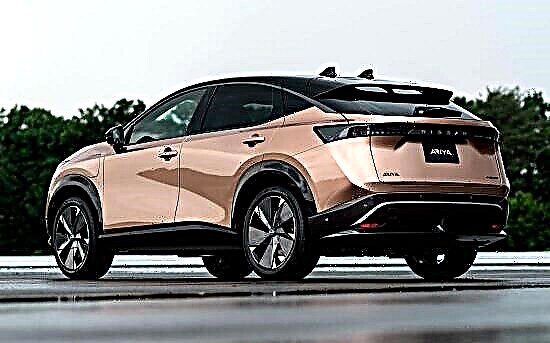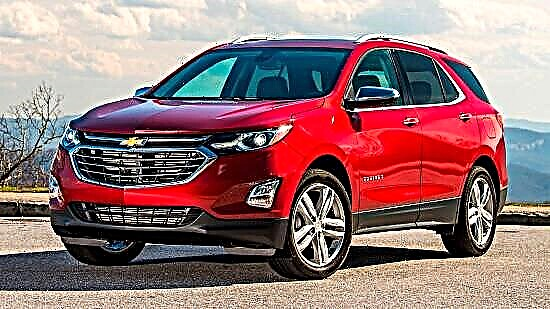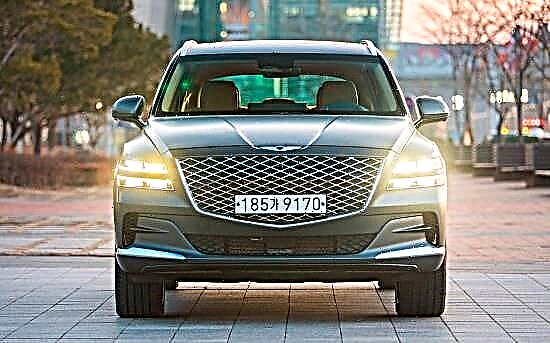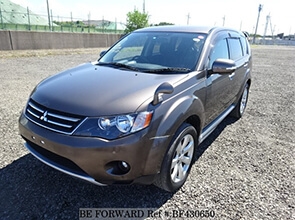Ratings of cars and auto products
Reviews, comparisons & tips for motorists
What will happen if simple rural guys are sent to a big city and placed in a company of intellectuals? That's right, after a while they will get used to and acquire gentlemanly manners - this happens not only among people, but also in the automotive world. If we consider the Mitsubishi Outlander and Subaru Forester of the first generations, you will notice that these cars are real off-road vehicles that can overcome very difficult rough terrain. However, after we saw the second generation Mitsubishi Outlander, originally produced with the "XL" prefix, it became clear that the compact SUV segment was gradually disappearing, and the cars themselves were becoming closer to midsize crossovers. Is it time to put on a suit and tie when getting into the Subaru Forester, or is the car still a convenient utilitarian transport - we will find out by comparing it with a purely passenger Mitsubishi Outlander.
Mitsubishi Outlander and Subaru Forester - which car retained more off-road qualities
Evaluation in dynamics
From a place - off-road
It will be most interesting to find out which of the cars will show the best result on rough terrain - Forester or Outlander, so we will start our review with a comparison in this area. As mentioned above, in the last generation Mitsubishi Outlander became a crossover designed exclusively for driving on good roads. However, Mitsubishi engineers slightly modified the new generation of the car, equipping it with other bumpers, increasing ground clearance and removing a huge spare wheel from under the trunk, which previously caused a significant decrease in cross-country ability. Alas, a miracle did not happen - everything is spoiled by a very short-travel suspension, which makes the wheels hang out already on irregularities of medium dimensions. In addition, the Mitsubishi Outlander lacks even an imitation of inter-wheel differential locking, which makes the car slip helplessly, hitting a large gully on a dirt road or hitting a particularly large stone.
The work of the new variator from Mitsubishi was not at all pleased - the unit works quite well in moderate modes, but it overheats even before the multi-plate clutch that supplies torque to the rear axle. Finally, it is worth not very flattering about the large fashionable bumpers Mitsubishi Outlsnder - although in fairness it should be said that the Subaru Forester has the same exterior design elements. The Outlander's suspension, when traveling on level ground, provides very high comfort due to its softness and optimal settings. However, one has only to go to the Mitsubishi Outlander to conquer the vastness of domestic off-road and suburban roads, as the softness immediately turns into a strong buildup, forcing the driver to slow down and the passengers to frantically grab onto all protruding objects.
If you compare the Mitsubishi Outlander and Subaru Forester, at first glance, there are no big differences. The all-wheel drive system uses a similar multi-plate friction clutch, although a bevel differential is available for the manual transmission version, which provides a constant supply of torque to all wheels. However, its settings are the best - unlike Mitsubishi, Subaru Forester slips in the mud much less time before connecting to all-wheel drive, and also allows you to actively move over rough terrain without fear of overheating of the transmission. Even the Subaru CVT gives up much later - and even then it just warns the driver, and does not go into emergency mode with load limitation. In addition, a special electronic system imitates the blocking of inter-wheel differentials in the Subaru Forester, which in most cases makes it easier to overcome the most difficult sections.
| Car model: | Mitsubishi outlander | Subaru forester |
| Producing country: | Japan (Build - Russia, Kaluga) | Japan |
| Body type: | Crossover | Crossover |
| Number of places: | 5 | 5 |
| Number of doors: | 5 | 5 |
| Engine displacement, cubic meters cm: | 2360 | 2457 |
| Power, hp with. / about. min .: | 166/6000 | 171/5800 |
| Maximum speed, km / h: | 195 | 196 |
| Acceleration to 100 km / h, s: | 10,5 | 9,9 |
| Type of drive: | Full | Full |
| Checkpoint: | Variable speed drive | Variable speed drive |
| Fuel type: | Gasoline AI-92 | Gasoline AI-95 |
| Consumption per 100 km: | In the city 10.6 / Outside the city 6.9 | In the city 10.9 / Out of the city 7.2 |
| Length, mm: | 4655 | 4595 |
| Width, mm: | 1800 | 1795 |
| Height, mm: | 1680 | 1735 |
| Clearance, mm: | 215 | 220 |
| Tire size: | 215/70 R16 | 225/60 R17 |
| Curb weight, kg: | 1495 | 1508 |
| Full weight, kg: | 2210 | 2245 |
| Fuel tank volume: | 63 | 60 |
However, the other disadvantages are still the same - an exceptionally short-travel suspension and oversized bumpers, which limit the angles of entry and exit. It is worth noting the fact that the Subaru Forester, even in the most expensive configuration, is not equipped with an engine sump protection, although it is in the asset of the base Mitsubishi Outlander. If we talk about the Forester's suspension, then in many modes it can seem harsh. But after driving on a bad road, you realize that Subaru engineers have not in vain picked up just such settings for the chassis - the car does not seem to notice the pits, reliably protecting its passengers from shaking due to its incredible energy intensity. In addition, the car does not lose controllability in such conditions - road irregularities are not transmitted to the steering wheel.
And if in the city?
If you make a large modern city a proving ground, the Mitsubishi crossover undeniably wins in the comfort comparison of the Forester or the Outlander. Its variator works more smoothly, allowing you to get under way almost imperceptibly without unnecessary jerking and pecking of the soft suspension. The chassis itself also does not make itself felt in any case, except for very already large irregularities - for example, tram tracks or "speed bumps" on which the Mitsubishi Outlander jumps like a frightened horse, making passengers experience several unpleasant moments. Four-wheel drive is only used in winter or in conditions that are completely unsuitable for normal driving. By the way, when climbing such urban obstacles as high curbs, the Mitsubishi Outlander gives the driver the advantage of being able to transfer up to 100% of the torque to both the front and rear axles.
Test drive a car Subaru Forester:
The Mitsubishi engine with a volume of 2.4 liters gives the vehicle good dynamics, although it does not make it a sports car. The active transmission mode, in which you can change the fixed gear ratios of the variator using the steering column switches, seems completely superfluous - the Outlander behaves quite confidently when using automatic equipment. The element of the car is smooth and unhurried city driving, in which there is no place for recklessness and demonstrative starts from a traffic light - for a large family crossover, which is Mitsubishi Outlander, this is a significant advantage.
If you compare Mitsubishi Outlander and Subaru Forester, the second car shows itself from a completely different side. The car seems to force the driver to actively get under way, leaving behind even quite powerful cars. Of course, there is no trace of the incredible power flow that was characteristic of the turbocharged engines of the Subaru Forester of previous generations, combined with manual transmissions, but the car still belongs to the most dynamic urban crossovers. And here you already want to use "virtual" fixed gears, of which there are as many as 8 in the Forester. However, if you want to give preference to economy, you just need to select the automatic transmission mode of the Subaru Forester and try not to press the gas pedal too hard.
Test drive a Mitsubishi Outlander car:
Suspension Subaru in the city sometimes seems inappropriately stiff - it makes passengers feel not only large irregularities, but also such minor road defects as cracks in the asphalt and pavement joints. Looking at this, you involuntarily slow down in front of the tram tracks - and absolutely in vain! After all, the energy intensity of the Subaru Forester's suspension is fully revealed at medium speed, which makes it possible to almost not touch the brake even on streets with very poor coverage. However, Forester is still tiresome - if the road is not ideal, you will have to get used to constant shallow shaking.
How much will we take away?
Another important quality for a modern crossover is practicality, which is expressed in the capacity of the trunk and rear sofa. And here the comparison of Forester and Outlander will be most appropriate. Opening the back door, at first you wonder - where in the Mitsubishi Outlander have gone such huge dimensions for an urban crossover? The useful volume of the luggage compartment in a Mitsubishi car is 480 liters, which is far from a record figure. In addition, the wheel arches protrude towards the center as a kind of square "bollards", significantly impairing the ability to load large items. However, the Mitsubishi Outlander can please us when transforming the cabin - when the rear sofa is lowered to the floor, the compartment's capacity increases to almost 1.7 cubic meters with a flat floor.
Now let's move a little forward - it immediately becomes clear why the trunk of the Mitsubishi Outlander with the sofa fully open does not please us with its capacity. There is enough space for three passengers who will not feel cramped even if each of them is a professional weightlifter. The Outlander has a lot of space both between the two rows of seats and over the head of the riders. In addition, the rear seating position is close to perfect - not a single glaring ergonomic error can be found, although some may find the pillow a little short.
If you decide which is better - Forester or Outlander, then the Subaru crossover when looking through the fifth door will seem more convenient and practical. The wheel arches in the trunk are not so large and have a rounded shape, which allows you to free up some space for loading equipment used on a long journey. However, with the transformation of the interior, the trunk of the Subaru Forester increases from 500 liters to 1.55 cubic meters, which is significantly less than that of the Mitsubishi Outlander. In addition, a step formed on the floor causes annoyance, which prevents large flat objects from being loaded inside.
Yes, and with the space in the back row, everything is not so good - passengers are freely accommodated in the Subaru Forester in width, but they feel a certain lack of space in length and height. But at their service there is a chic armrest, in the lower level of which there are large cup holders that allow you to place not only bottles with a capacity of 0.5 liters and cups of coffee, but also larger vessels, for example, from McDonald's. The Subaru Forester also has no problems with the comfort of seating on the back sofa, although the tightness spoils the feel a little.
Design competition
Salon
Mitsubishi stylists have applied the original solution, laying a chrome frame around the center console, dashboard with steering wheel and the left deflector and filling the empty space inside it with lacquered plastic. However, in general, if you compare the Forester and Outlander, the latter will yield to its competitor, produced by Subaru. In the interior design of Mitsubishi Outlander, only hard plastic is used, which responds with an unpleasant booming sound at the slightest impact on it. In addition, neither the large-spoke steering wheel, trimmed with the same cheap plastic, nor the space under the Outlander center console, in which only the gearbox mode selector stands out, arouses any enthusiasm.
However, there are some advantages in simplicity - the interior is quite easy to clean, and dirt is not so clearly visible against a gray background. In addition, the Mitsubishi Outlander instruments are perfectly readable, in many respects, precisely because of their simplicity - when looking at them, you do not waste a single split second of precious time, which is so important when the traffic situation changes rapidly. The seats are optimally shaped, although some will again find the cushion short, while others will complain about the Outlander's too wide lateral support. An interesting enough feature of the Mitsubishi Outlander is the use of a deep container in the front armrest - you can put in it not only small things like a memory card for the multimedia system, but also a thermos and dry rations for the whole company going on a picnic.
The Subaru Forester's interior looks much better, albeit very controversial. The materials used are very good, but the appearance of the front panel evokes thoughts of the late 90s - only the large screen of the multimedia system and additional electronic devices under the visor can distract from them, although they look alien here. What immediately attracts attention in the Subaru Forester is the beautiful instruments, in which each of the two dials is bordered by a chrome bezel. The Forester steering wheel with relatively thin spokes, decorated with a scattering of keys, also looks interesting.
Appearance
After the last restyling, the Mitsubishi Outlander began to look more overweight - thanks in large part to a very narrow radiator grille and a tiny brand logo. The situation is aggravated by the Outlander's strongly protruding bumper with a large slot in it. However, there is one original detail in the front end that visually lightens it, making the overall appearance of the Mitsubishi Outlander more harmonious and balanced - it is the large curved stampings that rise from the lower part of the bumper to the headlights. On the side, Mitsubishi designers used a large stamped line running along the entire length of the sides - it gives the crossover a more dynamic look. The rear also looks good - only the bright lights contrast too much with the Mitsubishi Outlander body when choosing a dark color.
If you compare Outlander versus Forester, Subaru's car is much more harmonious, despite some disproportionality caused by the higher height and increased ground clearance. The front of the Subaru Forester looks really aggressive due to the large bumper with undershooting, as well as two notches in the center, separated by a powerful plastic cross member. Even more aggressiveness of the Forester is given by the headlights tapering towards the center by a small "step". When viewed from the side, the Subaru Forester feels a bit ponderous due to the swollen wheel arches and the straight bottom line of the glass. But the rear view is very harmonious - sharp-angled headlights and a strongly protruding bumper attract attention in it.
Gentlemanly manners?
Of course, with the change of generations, both the Subaru Forester and the Mitsubishi Outlander have become more comfortable - however, they had to sacrifice increased cross-country ability. Of course, Subaru allows you to move on rough terrain more confidently, but sooner or later it gives up. But the Mitsubishi Outlander wins in terms of capacity, although it is inferior to a competitor in terms of dynamics and interior design style.

